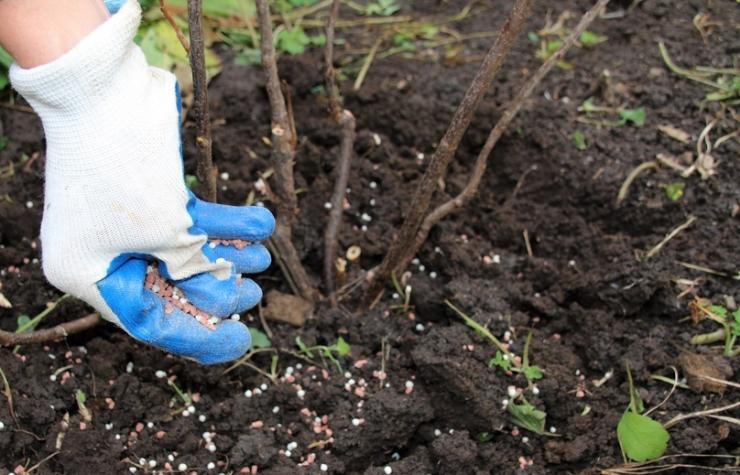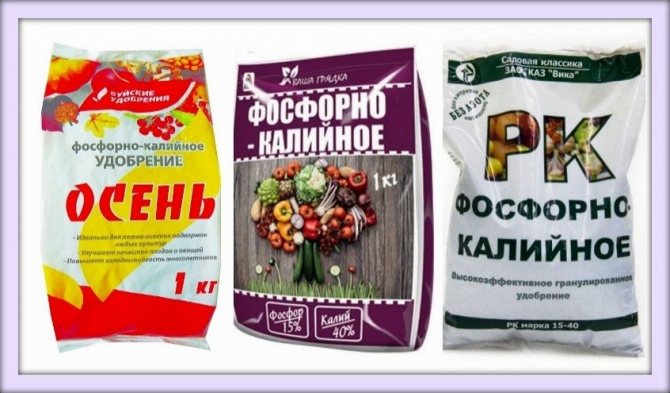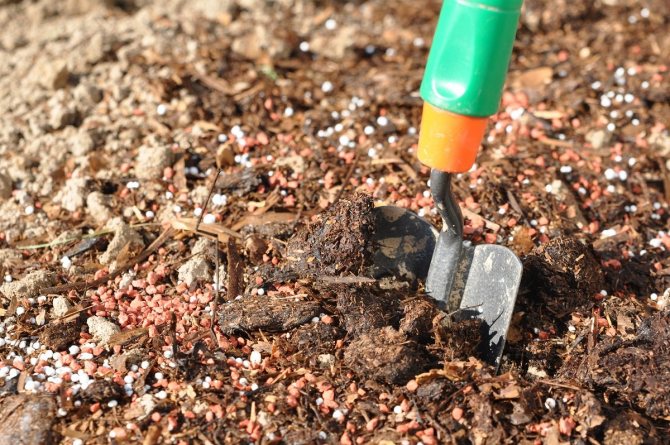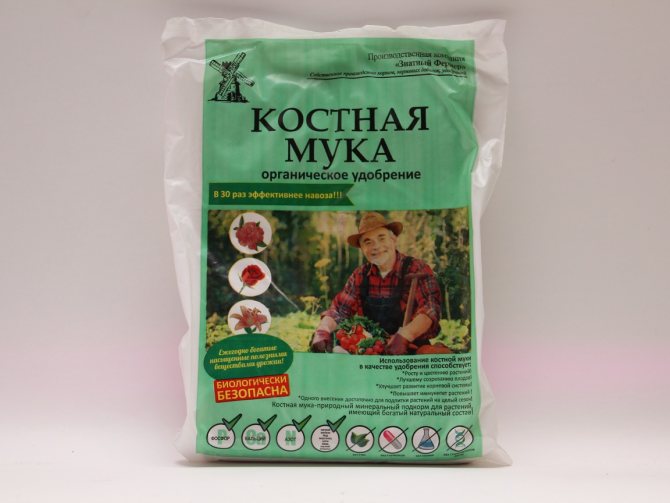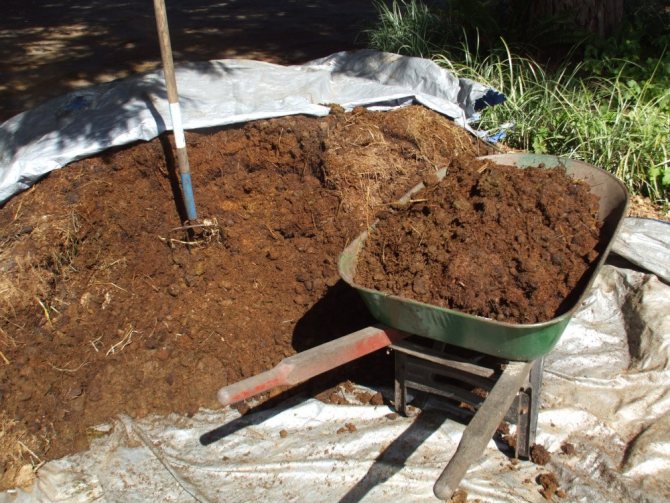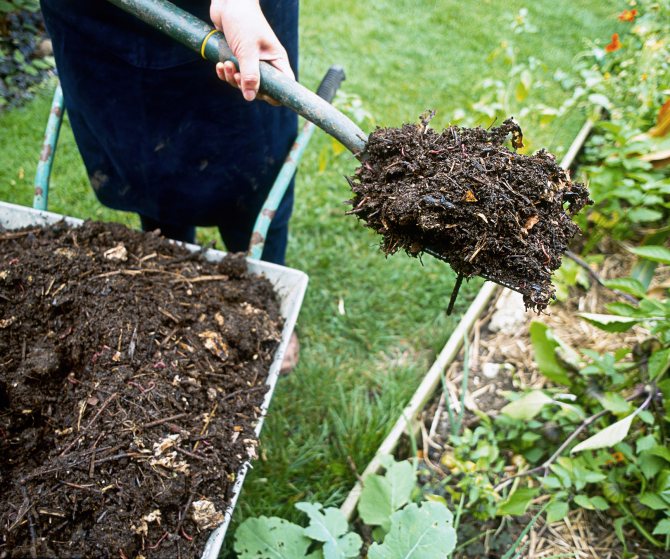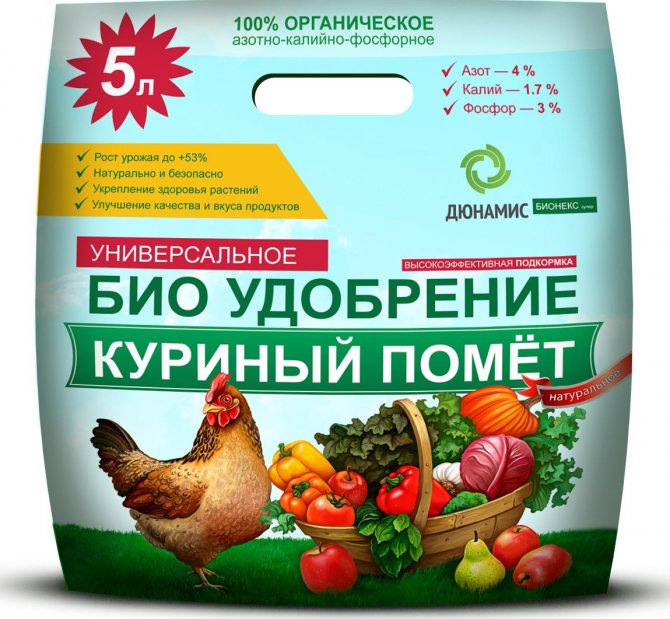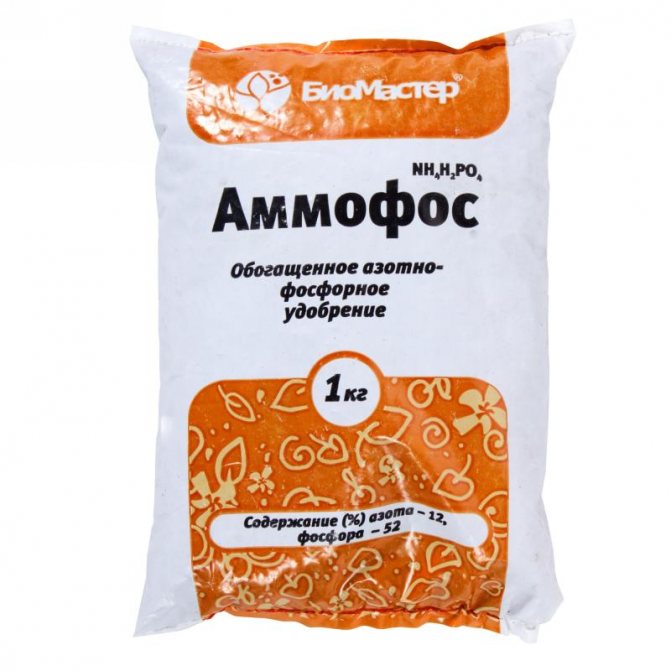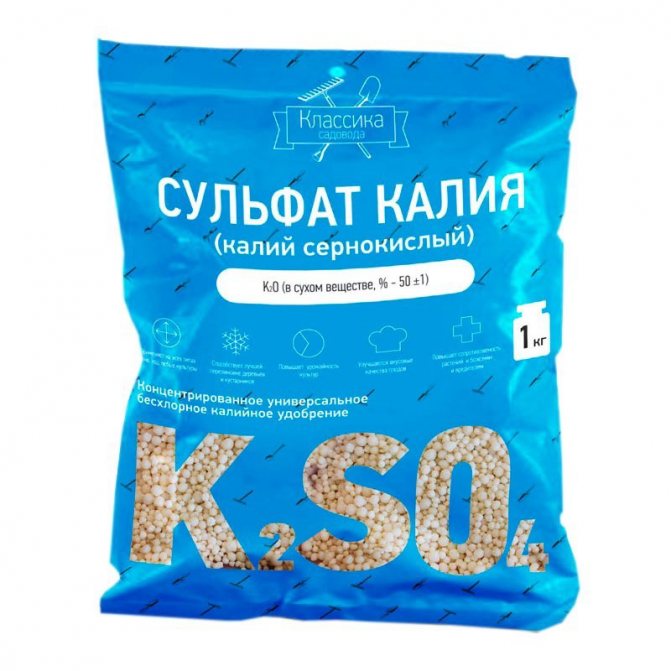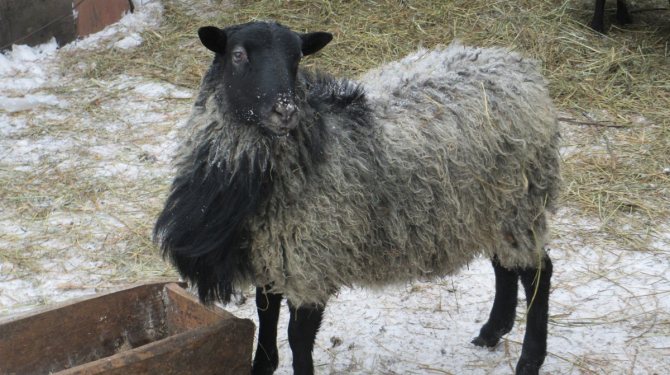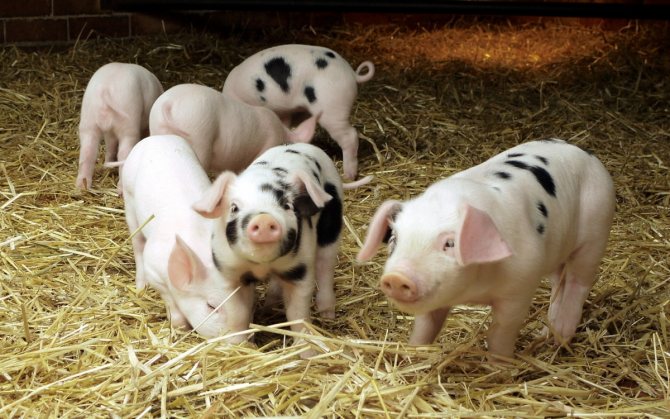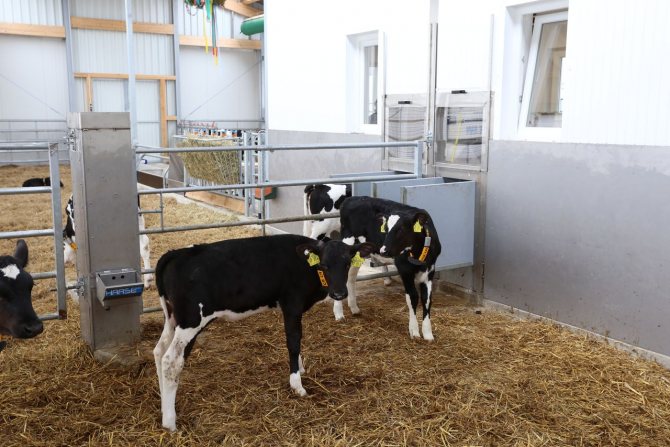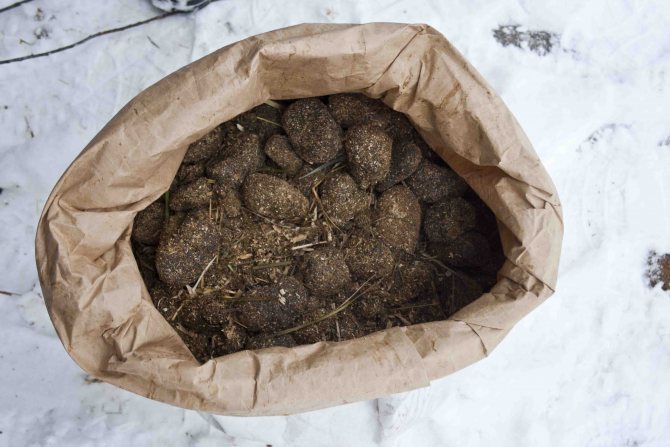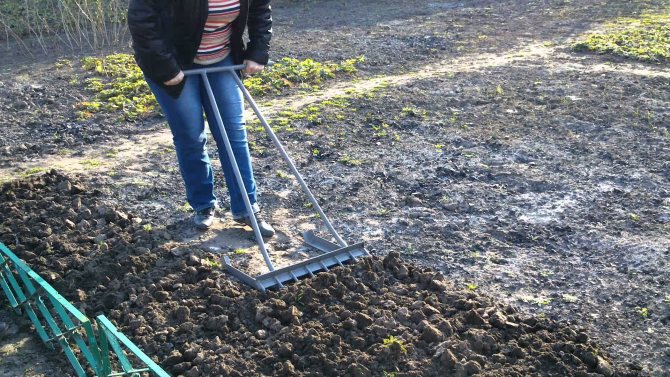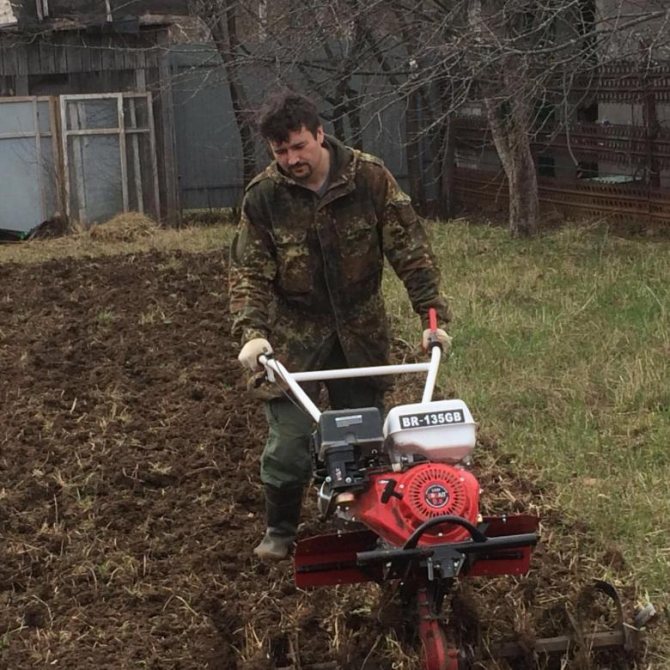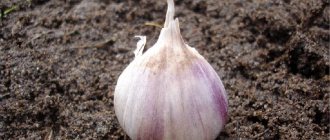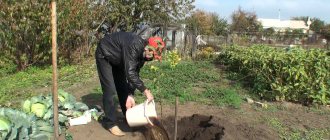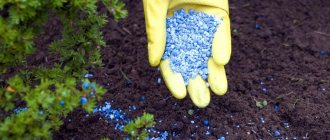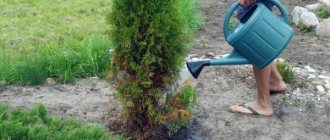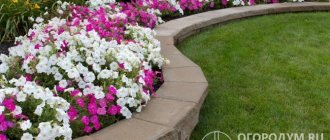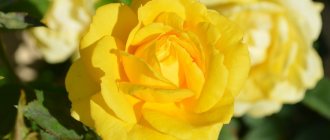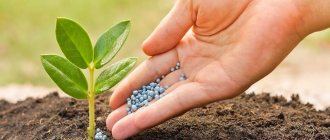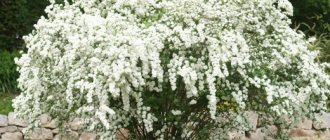Content of the article
- Mineral fertilizers
- Secrets of using mineral fertilizers
- Organic fertilizers
- Alternative methods to improve the quality of land
- The most affordable fertilizers
Many gardeners and gardeners believe that manure is the best fertilizer. But what can you fertilize the land with in the fall if there is no manure? You should not be upset. Manure is far from a panacea for the land, and in some cases it can bring a lot of problems. Poorly prepared manure compost contains a huge amount of weed seeds, which germinate when applied, and it will take a lot of effort to lime them. If humus has not "lain down" for a sufficient amount of time, it may contain pathogenic bacteria, parasite larvae that will infect the earth. Therefore, it is better to find alternative methods of increasing soil fertility, since there are many of them.
Mineral fertilizers

In any store of the "Household and Cottage" type, you can easily purchase the necessary set of mineral fertilizers. But first you need to make your choice. In the fall, only those types are introduced that are difficult to dissolve and have a long-term effect. Otherwise, the granules will simply be washed away by rains, and until spring there will be no nutrients left in the upper layer.
In October, it is good to apply granular fertilizers containing potassium chloride and superphosphate with the addition of lime - fluff. Lime is needed to deoxidize the soil. Dolomite flour or chalk also has an equivalent effect. To fertilize trees and shrubs, it is useful to scatter complex mineral fertilizers around them, having previously loosened the soil for better absorption of minerals.
Even beginners will be able to use mineral fertilizers, since the packaging always says under which crop, how and how much granules should be applied. It is in vain that someone thinks that "you cannot spoil the porridge with butter." This saying does not apply to fertilizers. If you overdo it, you can damage the soil, and excess nitrates and nitrites will accumulate in vegetables.
Fresh excrement and soil acidity
Fertilizing the soil or plants in the spring with fresh manure or products derived from it, it is necessary to monitor the acidity of the soil in order to avoid acidification.
This can be done with a garden ph-meter, then if the soil is too acidic for the selected or planted plants, one of the following substances is added to it:
- ash;
- dolomite flour;
- a piece of chalk;
- lime.
Such a check is mandatory before planting seeds or seedlings, because, unlike adult plants, they cannot withstand high acidity and will quickly die.
If the acidity is optimal for the plant, then it will develop rapidly and actively, and also hurt less. In addition, it is necessary to check the prepared soil mixture with a ph-meter and, if necessary, adjust its acidity.
Secrets of using mineral fertilizers
There are many subtleties as to which plant loves which type of mineral fertilizers. For example, potatoes respond poorly to potassium chloride, but sulphate is more suitable for him. Nitroammophoska will also benefit the garden. It is important to remember that mineral fertilizers must be used carefully.To achieve the maximum effect, you need to at least roughly know what elements the soil needs on your site.
It is better to conduct a laboratory chemical analysis of the soil. However, this is far from the most affordable service. It is much easier to identify the deficiency of substances by traditional methods. To determine the acidity of the soil, you will need a litmus test, vinegar or a special pH probe, which is available on the market. This device is the most convenient. You can find out if the soil is acidified by visual inspection. The whitish layers just speak of this. A good result can be obtained only with neutral soil acidity.
To obtain a high yield, it is necessary to give the plants a full range of microelements. At the same time, bearing in mind that nitrogen activates the growth of foliage and shoots, phosphorus promotes the formation of ovaries and flowers, potassium increases the resistance of garden crops to diseases, calcium regulates acidity. These are the main elements, but there are a number of others that plants also need. These are copper, iron, zinc, manganese and others.
How to feed trees in spring?
The melting snow washes away the nutrients accumulated over the past season from the soil, and therefore the trees need replenishment. Nitrogen, which is so necessary for the growth of green mass, is the first to leave the soil. It is with the introduction of nitrogen under the fruit trees that it is worth starting the season of gardening.
Fertilization is carried out 2-3 weeks before flowering. To do this, use one of the following solutions:
- 5% solution of urea, ammonium nitrate or bird droppings at the rate of half a bucket per 1 square meter of the trunk circle;
- diluted in 2 liters of water 500 g of slurry per 1 square meter of the trunk circle.
You can also quickly replenish nitrogen reserves by foliar feeding (spraying) with urea. For apple trees, a 0.3% solution is suitable, for pears - 0.1-0.2%, for stone fruit crops (cherries, plums, sweet cherries, apricots) - 0.5-0.6%.


Organic fertilizers
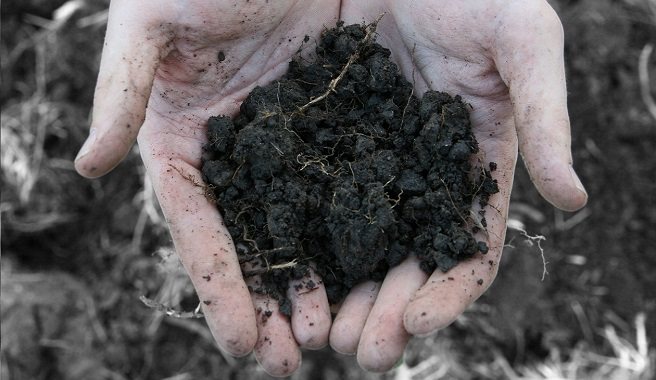

Organics have a clear priority over chemicals. Vegetables and fruits grown on natural soil are in increasing demand, despite their high market price. When talking about organic fertilizers, it is not at all necessary to mean manure. There are a large number of ways to fertilize the land, using the materials at hand that are available to every gardener and gardener.
Organic compost plays a major role here. The term "organic" means not only cut grass, straw, fallen leaves, tops of vegetable crops, although they are very suitable for this. Leisure summer residents who are unable to deliver manure prepare humus from numerous food waste. These are peeling potatoes, onions, bananas, apples, peels of watermelons and melons, egg shells and much more that remains with the hostess during the cooking process.
All this mass must be placed in a hole specially dug for this, or directly on the ground, preferably in a shaded corner of the land plot. In this case, the contents should be fenced off with sheets of slate, iron or boards to provide the necessary seal. The organic matter must be constantly wet, for which it is good to water the pile during the dry period, and then cover it on top with plastic wrap. As you add mass, you need to crush it with your feet.
A compost heap like this is a treasure trove of high quality fertilizer. Due to it, you can increase the humus layer of the earth. To check how the raw materials are being processed, it is necessary to lift the mass from time to time and inspect the lower part. Under favorable conditions, there should be a lot of red (dung) worms. They are the main producers of humus. At the same time, there is another benefit: there is no need to dig worms somewhere for fishing, there are always an abundance of them in a heap.
In autumn, after harvesting, the tops and foliage are burned in many areas. This is not recommended.Much more benefit can be gained by placing crop leftovers in a compost heap. If the area of the site allows, you can even build two. While the mass decomposes in one, the second goes to digging, and so subsequently the process alternates. Some people do without compost heaps, simply burying grass and tops in holes and trenches. However, as practice shows, this method provides less benefit.
To properly fertilize the soil requires a large amount of humus. However, the amount of source material is still limited. It can be significantly increased by processing branches of trees and shrubs, which are often simply thrown away or burned. In developed countries, machines have long been used to grind wood, and small chips are then used for composting. In recent years, such units have appeared in our country. Therefore, you should think about purchasing it.
Manure derivatives - compost
From fresh excrement, a plant nutrient is prepared - compost. There are no weed seeds, helminth eggs in the finished compost. The amount of nutrients is balanced.
For ripening, a pile of wooden boards is equipped so that air can penetrate inside and support the combustion process - heating the manure and other components.


Manure, plant residues, kitchen waste are piled in layers, sprinkled with soil and peat. The presence of peat creates conditions for the preservation of nitrogenous substances, since they are absorbed into the peat layer.
The compost ripens from 9 months to a year. After that, the substance formed as a result of chemical reactions smells like fresh earth, seemingly black, loose, moist. If there is more water in the compost than necessary, the pile is opened and dried. If you squeeze a lump of compost in your hand, it should stick together, but no water should flow out.
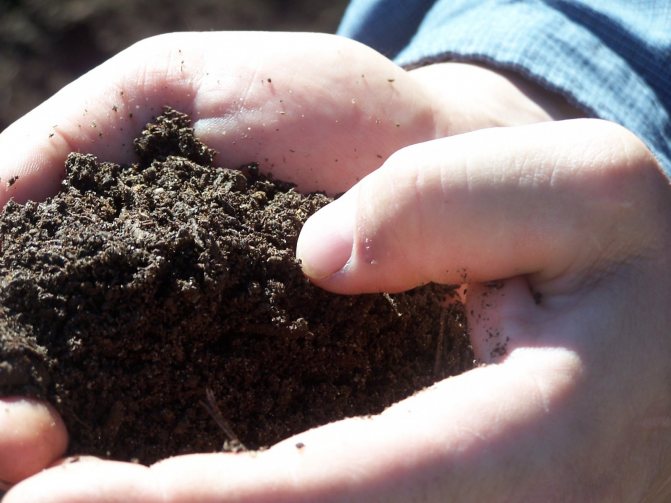

It doesn't matter when to add compost to the soil - in the fall or spring. It will not harm the plants, but will improve the aeration of the soil and increase the amount of humus. To prepare compost, take any fresh excrement with bedding, as well as waste in the form of fallen leaves, greenery, green manure. It is impossible to add ash to maturing compost - only after final readiness.
Alternative methods for improving land quality
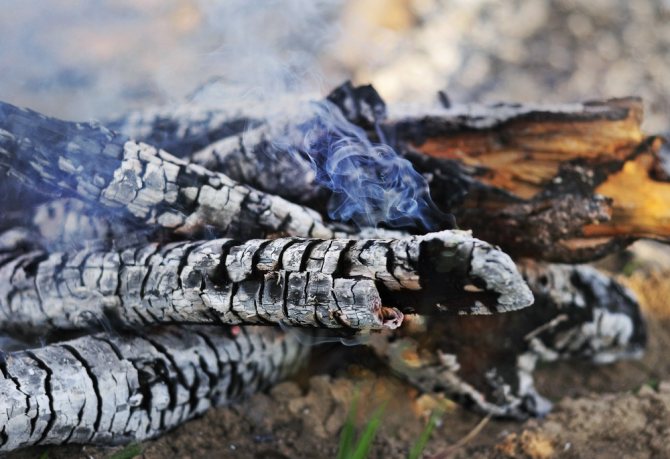

The question of how to fertilize the soil without manure worries the owners of land plots. Let's talk about other ways to increase soil fertility. For example, a tincture of nettle or, at worst, any other weed, gives a good effect. For several days, it is placed in a barrel of water - and the nutrient solution is ready. It will even emit a characteristic "dung" smell. Do not throw away the used grass, but place it in the compost heap. A good owner should have a waste-free production.
Ash is the most valuable natural fertilizer. Ash from coal burning helps the soil, but wood ash is still much better. It contains the entire set of trace elements that plants need, and in an easily assimilated form and in the complete absence of chlorine. The best thing is to add ash before digging the earth. Then it will be evenly distributed in the soil and will restore fertility during the winter. It is enough to add ash every 3 years. Potatoes, cabbage, strawberries and raspberries are responsive to this fertilizer. Ash, among other things, drives away harmful insects.
If there is a lot of ash, for example, when burning logs or thick tree trunks, then it can be stored for future use. To do this, you need to use plastic bags or glass jars so that the contents do not get wet. At the same time, provide the ash with air access. It is necessary to introduce ash into the soil in a highly crushed form for better assimilation.
On the vacated area after harvesting, experienced gardeners sow green manure. This is another effective and cheap way to enrich the land with valuable micronutrients.The best crops for this are mustard, peas, rye, rapeseed. After the plants grow 10 centimeters, they are buried in the ground. In the process of decomposition, the necessary substances are formed. In addition, green manures loosen the soil with roots, improve water permeability and aeration of the surface layer.
How to properly use humus
Humus gives a good effect on depleted and heavy soils: sandstone, clay, loam. It is advisable to observe the dosage, since exceeding the amount of fertilizer negatively affects the development of plants. The optimal amount is 2 - 3 tons per hundred square meters.
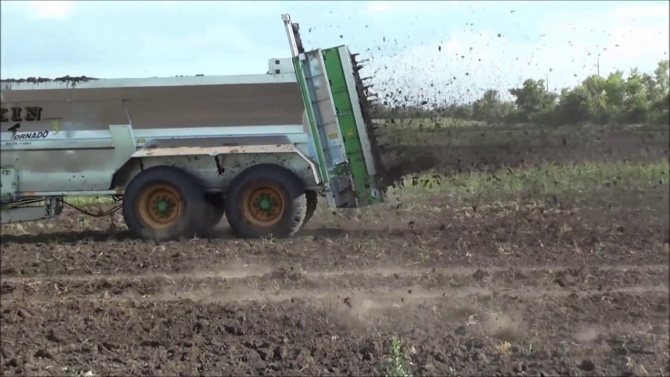

Do not overexpose humus. The maximum age should not exceed 3 years, since further oxidation of the substances that make up the composition occurs, the destruction of organic matter and the loss of nutrients. The most useful fertilizers are 1 - 2 years old.
When to apply manure to the soil depends on the time of the onset of cold weather. In the middle lane, this happens in September, early October, when all crops are harvested, the harvest is harvested. A month after digging in the soil, a reaction of interaction between microorganisms and manure begins, therefore bacteria have time to partially process the substance since the fall.
The most affordable fertilizers
In some regions, it is practiced to bring peat to the site due to its availability. However, it should not be used in its pure form. Better to add peat to the compost heap. It is not advised to abuse peat, since, despite the abundance of useful organic substances and the ability to retain moisture, it has a decent acidity. True, in the lower layers the peat reaction becomes slightly acidic.
Heavy clay soil must be "diluted" with a loose mass. Sand is suitable for this, it is better if it is river, without clay impurities. Almost every regional center has sawmills or sawmills that produce a lot of sawdust. They can also be added to the ground for autumn digging, but not fresh, but in a semi-rotten form. Sawdust can be a good ingredient for making compost humus.
In rural areas, many people keep poultry. Chicken manure is also an excellent fertilizer, it is easily absorbed by crops. You just need to use it correctly. In no case should it be applied fresh as a top dressing for trees or shrubs, as droppings can "burn" the roots. But under a continuous autumn digging, you can make it, but not every year. The fact is that nutrients are stored in the ground for a long time in the required concentration.
It is a good idea for owners of home gardens to take a closer look at elevators, flour mills, grain-cleaning machines, if any, in your area. These enterprises, in addition to the main products, generate a lot of valuable waste. These are buckwheat and millet husks, crushed mass left after threshing and cleaning of grain, rapeseed and sunflower seeds. This raw material, which can be practically taken for free, can be either directly applied to the ground, spreading in an even layer, or put on compost.
What to contribute:
- Manure from cows, horses, goats and other farm animals, bird droppings. During the growing season, such fresh organic matter is not introduced, but in the fall - please. During the winter it will "mature". Carry out the filling to a depth of about 15 cm. 1 bucket of organic fertilizers is applied per 1 m2 of area 1 time in 4-5 years.
- Humus or compost - both mature and immature. For 1 m2, 3-4 kg of fertilizer are applied to a depth of 15 cm. Humus can also be used for surface mulching of beds and tree trunks and shrubs. To do this, they are covered with a layer of 5-7 cm.
- Ash is one of the richest natural sources of micro- and macroelements available to every summer resident. The best ash remains after burning potato tops and branches of fruit trees and bushes remaining after pruning. For 1 m2 approximately 1 time in 4 years for digging, add 1 kg of dry ash.
- Siderata are useful plants that are planted in a vegetable garden after harvesting. Most often, legumes, mustard, lupins, rye are used for these purposes. In late autumn, the green mass, as a rule, is mowed and embedded in the ground. Winter crops are mown the next spring or summer. Such plants not only saturate the earth with useful and nutritious substances, but also make it looser, relieve pathogens and pest larvae.
- From the point of view of nutritional value, sawdust is of little use, but with their help you can make heavy soil looser, attract more earthworms to the site. Sawdust should be brought in for autumn digging once every 3 years.
- Often, together with humus, high-moor or low-lying peat is introduced in autumn. The first promotes good moisture retention, has a neutral pH reaction, but is not nutritious. The second is rich in nutrients, but slightly acidifies the soil.
- In the fall, be sure to add superphosphate. This mineral dressing will decay very slowly, just before the next summer cottage season. Consumption of ordinary superphosphate - 50 g per 1 m2, double - 30 g per 1 m2, granular - 40 g per 1 m2. For better assimilation, this component is best applied together with potash fertilizers and manure.
- Be sure to add potassium sulfate under raspberries, strawberries, gooseberries and currants, spending 30 g per 1 m2.
- Acidic soils should be deoxidized once every few years. To do this, add dolomite flour, slaked lime, chalk, wood ash.
Fertile land is the key to a rich harvest. Do not forget also about observance of the rules of crop rotation - "move" the beds to new places.
Potassium based preparations
Potash fertilizers are another type of mineral-based fertilizing agent. Preparations with potassium can be used independently, or can be used in a complex way, combining with nitrogen fertilizers. Most often, products with potassium are sold in specialized stores in the form of powders, that is, in dry form.
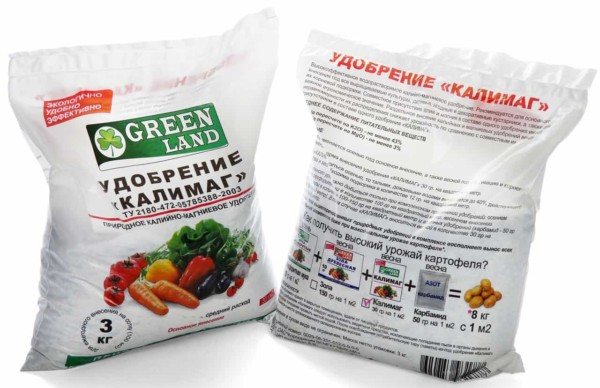

The main types of potash fertilizers are:
- Potassium salts. They contain 30-40% potassium oxide. Salts can be of several shades: white, gray and pink. Crystals contain large amounts of chlorine and sodium. Such dressings are ideal for sod-podzolic acidic soil. Potassium salts are best suited to berry plants.
- Potash. It contains 50% potassium oxide. The substance dissolves quickly in water. Potassium carbonate tends to be deposited in the ground, since it is hygroscopic. It belongs to the alkaline type of fertilizer, so it can be used in slightly acidic and acidic soils.
- Potassium chloride. It is a fine-crystalline powder containing 50-60% potassium oxide. The drug can be of different shades: from gray to pink. Top dressing does not move in the ground, accumulating in one place, so they must be applied deeply - to the roots. In summer, when it is especially hot outside, the use of potassium chloride is not recommended, as it greases and dries up the soil.
- Kalimagnesia. It contains 30% potassium oxide. Kalimagnesia is a crystalline powder of different shades: white, pink and gray. The preparation is ideal for light soil in which plants are planted that are in dire need of both potassium and magnesium.
- Potassium sulfate. The top dressing contains 45% potassium oxide. It is sold in the form of a powder that can be yellow, white and gray. The drug dissolves easily and quickly in water. Since there is no chlorine in potassium sulfate, it is allowed to use it for various types of soils.
You may be interested in: Top dressing tulips in spring for lush and vibrant bloom
Potassium-based fertilizers can be applied in both spring and autumn. They are suitable for use both dry and diluted.
Phosphate-potassium fertilizers: what types are there, their characteristics, methods of application
Intensive farming, focused on increased yields, very quickly depletes the land, and next year the number of fruits on vegetables, fruits, berry bushes will sharply decrease. The instability of yields is not due to the rest of trees or shrubs, but to the lack of nutrients in the soil.
The decline in yields is especially noticeable in greenhouse farms, whose soil is constantly exploited. If in the open field you can change the places of crops, then for the greenhouse there is only one way out: the laborious process of replacing the soil enriched with nutrients.
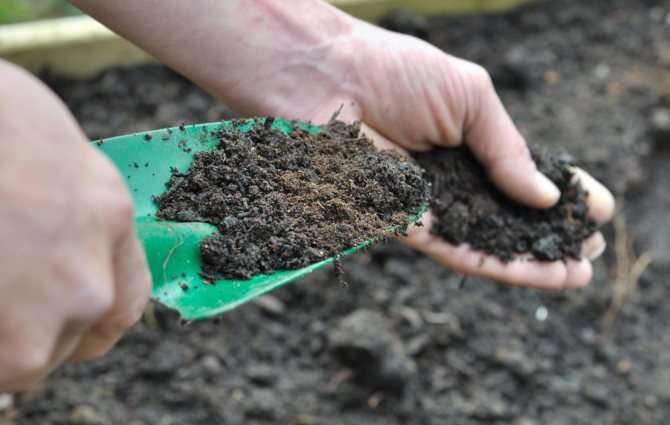

The soil in the greenhouse must be periodically enriched with nutrient mixtures.
For flower lovers, fertilizers containing nitrogen, phosphorus and potassium will delight the sight of beautiful buds and lush greenery. Those who grow flowers for sale will not have to suffer losses due to the insufficiently attractive appearance of the products. Potassium phosphate fertilizer for flowers solves the marketing problem.
Phosphorus-potassium fertilizers are especially useful for growing evergreen plants - spruce, thuja. Farms that use phosphorus and potassium for conifers need not worry about the unprofitability of the business - the plants will always be in excellent shape.
The importance of phosphorus for plants
To understand what phosphorus fertilizers are for, it is necessary to find out the effect of P on the representatives of the plant world. The substance is a basic component of nutrition, since it is part of DNA and RNA. It is responsible for the generative function of plants, therefore, due to phosphorus deficiency, vegetation can die completely.
Despite the fact that nitrogen and potassium are important for plants along with phosphorus, the absence of the latter in the soil can cause the death of the planet due to the total depletion of terrestrial flora.
Element deficiency signs
Lack of phosphorus can be determined without resorting to laboratory soil analysis. With its deficiency, the following manifestations are noted on plants:
- foliage acquiring a dark green color, changing to purple;
- change in the shape of leaf plates and premature fall of flowers;
- the appearance of spots with a darker shade on the back of the foliage;
- shrinking culture;
- loss of the stem from the ground due to the underdevelopment of the root system.
Timely application of phosphorites will help prevent such problems, ensure abundant flowering, preserve the harvest, and decorativeness.


